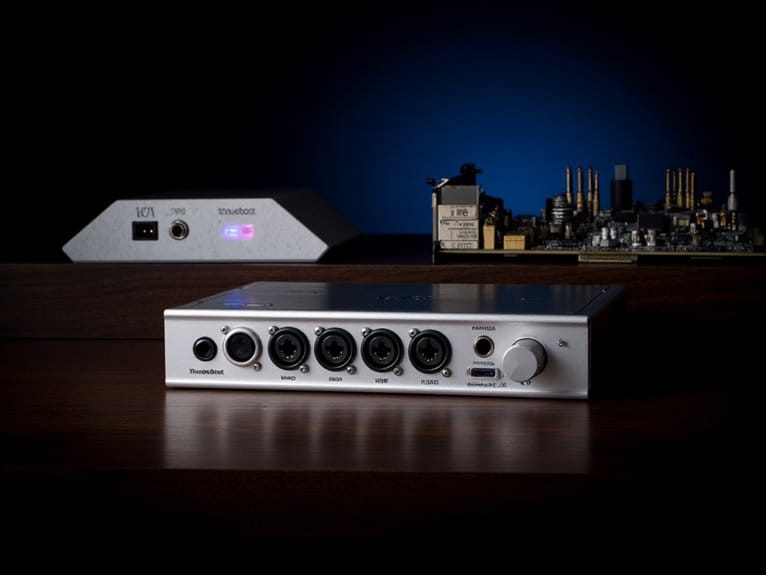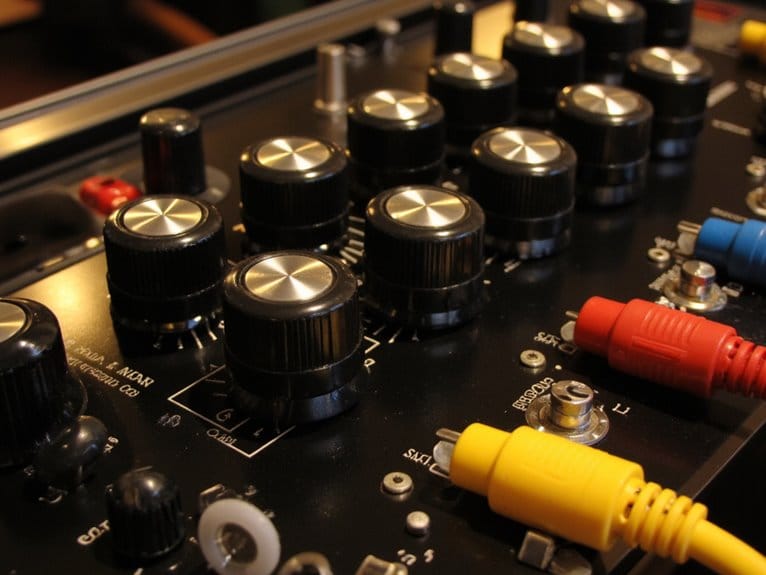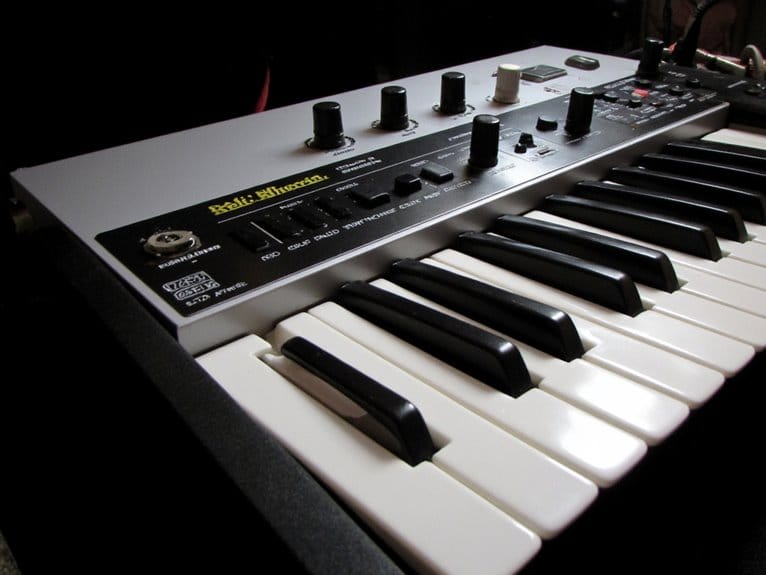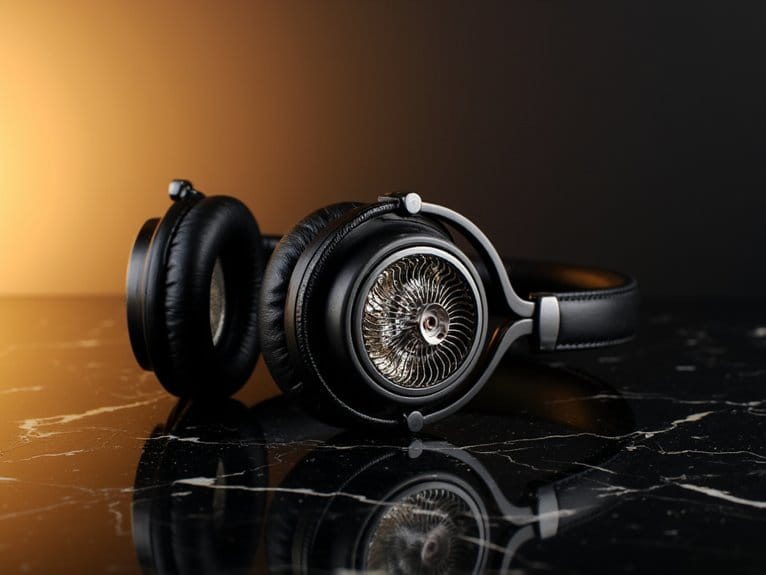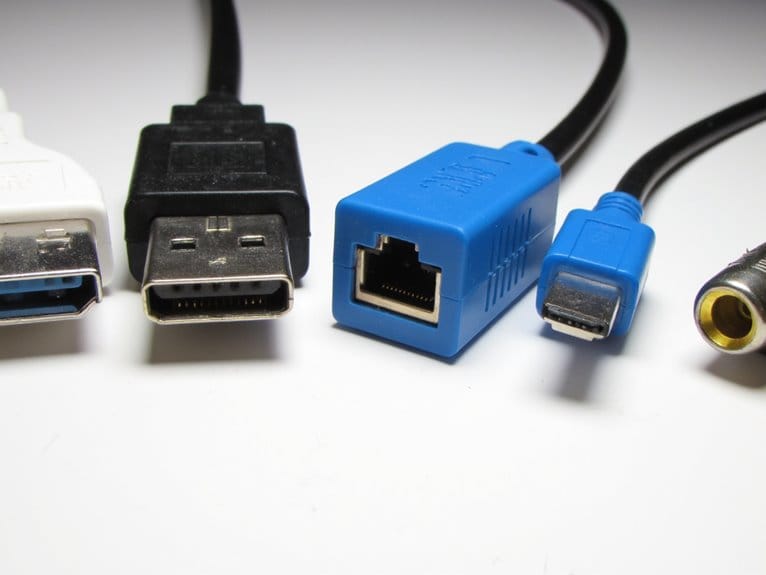Building the Perfect Blues Pedalboard
Building the perfect blues pedalboard starts with selecting three essential effects: a quality overdrive like the Ibanez Tube Screamer TS808 for smooth midrange boost, a reverb pedal for spatial depth, and delay for rhythmic interest. You’ll need a medium 24-inch board with isolated power supply to prevent hum, plus high-quality patch cables with right-angle plugs. Focus on pedals with dynamic response that react to your picking attack while maintaining signal transparency. The complete setup guide below reveals ideal signal chain positioning and advanced tone-shaping techniques.
We are supported by our audience. When you purchase through links on our site, we may earn an affiliate commission, at no extra cost for you. Learn more.
Notable Insights
- Choose a medium 24-inch pedalboard with isolated power supply to accommodate 5-8 pedals and prevent ground hum.
- Prioritize overdrive pedals like Tube Screamer TS808 or Blues Driver for authentic blues tones with dynamic response.
- Order signal chain: tuner, fuzz/boost, overdrive, modulation, delay, reverb for optimal sound quality and transparency.
- Select pedals with EQ flexibility and signal transparency that enhance musicality rather than overly transform sound.
- Use high-quality patch cables with right-angle plugs and reliable Velcro mounting for secure, professional setup.
Essential Pedal Types Every Blues Player Needs
While I’ve spent countless hours tweaking my pedalboard over the years, I can tell you that certain pedal types have remained consistently essential for achieving authentic blues tones that cut through any mix.
Overdrive essentials start with something like the Ibanez Tube Screamer, which provides that signature mid-boost and expressiveness every blues player needs. The Boss DS-1 offers reliable performance across multiple styles with simple tone controls that work exceptionally well for blues applications.
Fuzz characteristics offer thick, saturated textures that expand your amp’s natural overdrive, though they’re less common than overdrive in traditional blues settings. These pedals enhance your amplifier’s natural tube saturation rather than providing standalone high-gain distortion.
Reverb importance can’t be overstated-it creates the spatial depth that makes solos sing with emotional resonance.
Delay effects add rhythmic interest and moodiness, while treble boosting helps your lead lines cut through muddy, high-gain situations with clarity and presence. Remember that simple setups often deliver more powerful results than complex boards cluttered with unnecessary effects.
Choosing the Right Pedalboard and Setup Components
The foundation of any effective blues pedalboard starts with selecting the right board size and layout, because I’ve learned through trial and error that cramming pedals onto an undersized board creates more problems than it solves.
When considering pedalboard dimensions, you’ll want something like a medium 24-inch board that accommodates five to eight pedals while leaving room for future additions.
I recommend isolated power supply types over daisy chains, as they eliminate the annoying ground hum that can ruin your tone during quiet passages. The Voodoo Lab 4×4 works exceptionally well for blues setups, providing multiple voltage options for diverse pedal requirements.
Don’t forget high-quality patch cables with right-angle plugs, and always secure everything with reliable Velcro mounting.
Key Features to Look for in Blues Pedals
Once you’ve established your pedalboard foundation, understanding which pedal features matter most for authentic blues tone becomes essential.
I can tell you from countless hours of experimenting that certain characteristics separate genuinely useful pedals from expensive paperweights. The tonal characteristics you’ll want prioritize responsiveness to your guitar’s volume knob, allowing seamless shifts between clean and driven sounds that define expressive blues playing.
The difference between genuinely musical pedals and expensive paperweights comes down to how they respond to your playing dynamics.
Here are three critical features:
- Dynamic response – Pedals should react naturally to your picking attack and volume adjustments.
- EQ flexibility – Built-in tone controls help shape bass and treble frequencies for different amps.
- Signal transparency – Quality circuitry preserves your guitar’s natural sound dynamics without unwanted coloration.
Focus on pedals offering musical enhancement rather than dramatic transformation.
Top Pedal Recommendations for Authentic Blues Tone
What separates truly exceptional blues pedals from the countless options flooding today’s market, and after years of testing everything from budget-friendly stomps to boutique masterpieces, I’ve narrowed down the essential recommendations that consistently deliver authentic blues character without breaking your budget or overwhelming your signal chain.
| Overdrive Options | Key Characteristics |
|---|---|
| Ibanez Tube Screamer TS808 | Smooth midrange boost, tube-like saturation |
| Boss BD-2 Blues Driver | Transparent overdrive, maintains natural tone |
| Analog Man King of Tone | Natural, harmonically rich with dynamic response |
| Fulltone OCD | Rich harmonics, wide dynamic range |
| Wampler Pantheon | Versatile Bluesbreaker-style, extended voicing |
For boost comparison, the Xotic EP Booster consistently outperforms competitors with its Echoplex-inspired warmth, while the Dallas Rangemaster delivers that aggressive British bite Gallagher popularized.
Signal Chain Order and Optimization Tips
Having the right pedals means nothing if you can’t arrange them properly, and I’ve watched countless guitarists struggle with muddy tones, squealing feedback, and lost dynamics simply because they’d connected their carefully chosen effects in the wrong sequence.
Your signal chain determines everything about your blues tone, and mastering these optimization techniques will transform your sound immediately:
- Start with gain staging – Place your tuner first, then fuzz or treble booster to interact directly with your pickups.
- Control dynamics early – Position compressors and volume pedals after boost but before distortion to maintain clarity.
- End with ambience – Keep modulation, delay, and reverb last to preserve their natural character.
I’ve learned that wah pedals absolutely must come early for maximum expression, while overdrive pedals work best on clean, unmodulated signals for authentic blues response. Consider experimenting with uni-vibe style pedals placed before your overdrive for that thick, watery sound that’s perfect for emotional blues solos.
On a final note
You’ve got the roadmap to build your ideal blues pedalboard, and honestly, I’ve made enough mistakes over the years to know these recommendations will save you time and money. Focus on quality over quantity-three great pedals will always outperform ten mediocre ones. Trust your ears, experiment with that signal chain, and don’t overthink it. Your tone journey’s just beginning, and these fundamentals will serve you well.


